Regions at a Glance

Quito
City Panoramas
At 2850m and flanked by a massive volcano named Pichincha, this Andean city does not lack for breathtaking views. There are scores of great places to admire the panorama, whether at a rooftop restaurant in the old town, at a lush park or from the ridges of Pichincha itself (catch the TelefériQo).
Convents & Monasteries
Quito’s old town is a magnificent Unesco World Heritage Site of baroque churches, cobblestone streets, picturesque plazas and sun-baked Spanish colonial roofs. You can wander the cloisters of 16th-century monasteries, gaze at masterpieces of the Escuela Quiteña and ponder pre-Colombian carvings at fine museums.
Dining, Drinking & Dancing
Quito offers a wide array of temptations: tangy ceviche, tender corvina (sea bass), rich seco de chivo (goat stew), plus global flavors from Italy, Peru, Japan and beyond. Afterwards, you can work off those calories at a salsateca (nightclub) or go bar-hopping in the Mariscal.
Regions at a Glance
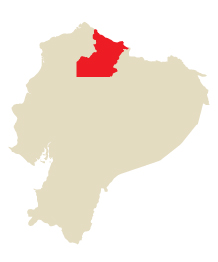
Northern Highlands
Cloud Forest Birds
One of Ecuador’s most diverse regions for birdlife, the northern highlands is a mecca for bird-watchers, who particularly love the cloud forest reserves near Mindo for the sheer variety of avian life.
Volcanic Peaks
The soaring peaks of the Andes make for some of the country’s best scenery: the snow-topped Volcán Cotacachi, the stunning views from the Panamericana as you head north, and the mesmerizing Lagunas de Mojanda near Otavalo should not be missed.
Artisan Crafts
Otavalo’s massive clothing and handicrafts market is a feast for the eyes: colorfully woven textiles, tagua (vegetable ivory) carvings, primitivist folkloric paintings and alpaca blankets, scarves and shawls in every color of the rainbow. For leather goods of all sorts, don’t miss Cotacachi.
Regions at a Glance
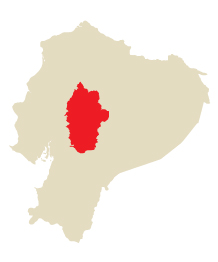
Central Highlands
Avenue of the Volcanoes
There’s a snapshot on nearly every corner. The spine of South America has glacier-capped volcanoes and high-altitude grasslands, precipitous canyons that rush white water down to the Amazon, and centuries-old haciendas cut from Incan stone.
Indigenous Communities
In the heart of the Andes, age-old cultural traditions remain a mainstay of everyday life. Culturally curious visitors will be rewarded with vibrant festivals, thriving crafts markets and remote indigenous villages, plus excellent museums in Ambato and Riobamba.
Climbing, Biking & Rafting
For adventure at full throttle, head just about anywhere in the central highlands. There are volcanoes to be climbed, rivers to be rafted, bridges to be jumped off and mountains to be cycled down.
Regions at a Glance
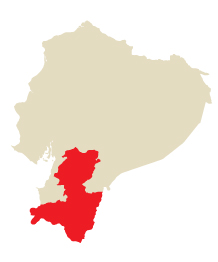
Cuenca & the Southern Highlands
Colonial Wonders
The colonial city of Cuenca is a veritable open-air museum with amazing architecture, historic center and plenty of artsy folks to get you in the mood.
Backcountry Adventures
Several national parks in the region provide intrepid explorers with splendid vistas, wildlife encounters and adventures aplenty. It takes some effort to truly get into the backcountry here, making the views, animal sightings and journey back all the more rewarding.
Gourmet Guinea Pig
The south serves up some of Ecuador’s best-loved dishes, from Cuenca’s magnificent fanesca (bean-and-codfish soup), served during Holy Week, to Loja’s corn-loving delicacies of tamales, quimbolitos (corn dumplings) and humitas (like tamales), served anytime. For the avant-garde foodie, there’s always cuy (roast guinea pig).
Regions at a Glance
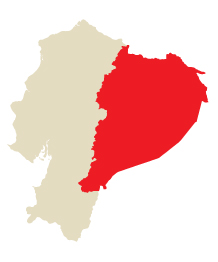
The Oriente
Jungle Wildlife
Caimans, sloths, anacondas, howler monkeys, parrots…these are just some of the amazing creatures you can expect to see while staying at a jungle lodge deep in Ecuador’s dense rainforest. You can even swim (safely) with piranhas.
River Adventures
If being deep in the rainforest isn’t adventurous enough for you, then the Oriente has no shortage of additional thrills to offer: white-water rafting, kayaking, tubing, climbing and horseback riding.
Boat-Building & Gold Panning
Sensitively organized community visits to indigenous villages can be a great means of cultural interaction, and hugely enjoyable. Learn how to cook, trap animals, build boats, pan for gold and prepare traditional meals.
Regions at a Glance
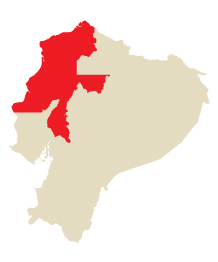
North Coast & Lowlands
Catching Waves
The north coast has some enchanting laid-back beach towns, from sleepy Same to captivating Canoa, with great surf spots (especially forest-ringed Mompiche) along the coast.
Coconuts & Ceviche
Cocina manabita and cocina esmeraldeña are considered two of the best cuisines in Ecuador, which makes the north coast a great place to sample the spicy, coconut-infused local cooking. Don’t miss the country’s best ceviche in Esmeraldas province.
Community Tourism
This area boasts some worthwhile community-run ecotourism destinations, including Playa de Oro jungle reserve and the wildlife-rich Reserva Biológica Bilsa. Other highlights include exploring mangrove forests around Muisne, learning about organic farming at the Río Muchacho Organic Farm and taking an ecocity tour in Bahía de Caráquez.
Regions at a Glance
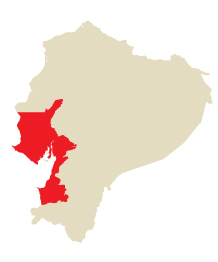
South Coast
Whale-Spotting
Migrating humpback whales share the waters with pods of porpoises, and first-rate birdlife can be observed in several nature reserves and the coastal mountain-range cloud forests.
White-Sand Beaches
The Santa Elena Peninsula has strings of resort towns for guayaquileños, lined with condominiums and soft white sand. North of here, all the way to Puerto López, beachfront villages with kilometer after kilometer of beach-breaks beckon, especially at Montañita, Olón and Ayampe.
Fresh Seafood
The region’s long coastline means freshly caught seafood is in plentiful supply. Piles of shellfish, ceviche, cazuela (seafood stew) and lobster are on the menu of even the most casual eateries. Guayaquil’s culinary scene is a showcase for Ecuador’s best restaurants.
Regions at a Glance
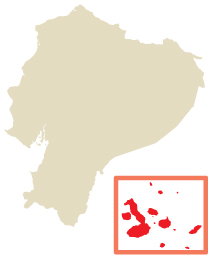
The Galápagos Islands
Reptiles & Blue-Footed Boobies
Get up close and personal with prehistoric-looking reptiles and a menagerie of birdlife, from vast colonies of endemic seabirds, mating albatrosses and flightless cormorants to tiny mockingbirds and ever-vigilant birds of prey.
Sea Lions & Sea Creatures
The variety of aquatic life is astounding. You can snorkel with sea turtles, rays, sharks, tropical fish, frolicking sea lions, speedy penguins and algae-crunching marine iguanas. Divers have spectacular options and memorable sites. It is best for intermediate-level divers and above.
Volcanic Landscapes
The Galápagos chain is an archipelago of volcanic islands; its scenic drama comes in the form of massive fumaroles, fantastic rocky escarpments, misty highlands and gorgeous beaches (with white, red, black, and gold sand).